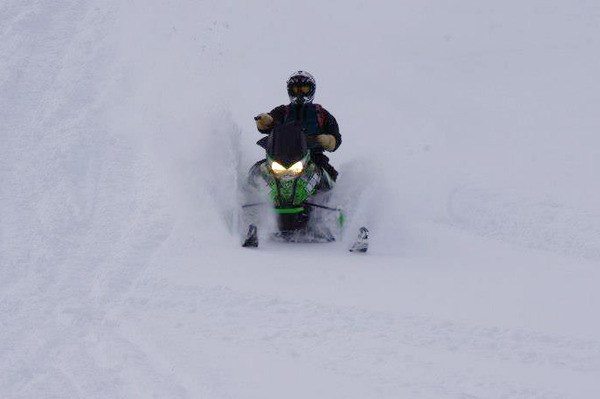With winter now in full swing snow sports are a typical pastime for many. One of these pastimes includes snowmobiling which is enjoyable in the cold weather, but also comes with dangers and caution is needed when out.
In Saskatchewan an estimated 50,000 people take part in snowmobiling and although avalanches aren't a threat, there are still many risks associated with the sport and being aware of them are important.
Saskatchewan has thousands of kilometres of groomed trails, but many people travel across fields and may be unaware of the specific geographic dangers after a snowfall. Large rocks are often covered by snow making it a hidden hazard that could cause ample amount of damage to the machine. Other dangers in fields can include ravines, grain bags, swathes, sloughs, and other hazards that can be hidden by the snow.
Tips for snowmobilers include riding with a buddy in case there is an issue, ensuring a full tank of gas before making long trips, carrying a spare fan belt, and coming to a complete stop before crossing roads or railway tracks. It's also essential to lift one's visor while checking both ways as it allows for the rider to hear over the rumblings of the snowmobile.
Important for riding SGI suggests snowmobilers ride with the proper clothing. This includes everything from avoiding long scarves which could get tangled and ensuring one's clothes are waterproof. It is also a good idea to wear a snowsuit with reflective striping.
Essential to the safety of a snowmobiler is a helmet. It is law that drivers and passengers on a snowmobile wear helmets. They are important for safety reasons, but also provide warmth to the rider.
Emergency kits should be carried and can be organized according to the length of the journey. When travelling basic items to include are a tool kit, spare spark plugs, as well as both drive and fan belts. A flashlight, waterproof matches, tow rope, compass, first aid kit, and maps should be brought for the trip. For longer trips canned heat, dehydrated food, a metal cup, knife, axe, shovel, and rope could be invaluable. Longer journeys could even include a sleeping bag or a pair of snowshoes, which could prove to be useful.
Being responsible is important when operating a snowmobile and rules in Saskatchewan stipulate that snowmobilers must be at least 12-years-old and have completed the Saskatchewan snowmobile course. In fact all people operating snowmobiles who were born after Jan. 1, 1989, are in need of their snowmobile safety course offered by the Saskatchewan Snowmobile Association (SSA).
Last year, to make this more obtainable for people across the province, the SSA put their course online. For those in rural areas who may be unable to attend the classroom course the online course takes approximately three hours to finish and contains five chapters. Each chapter must be finished before the snowmobiler is able to take on the final exam. Available at snowmobilecourse.com, it is offered 24 hours a day and costs $45 providing people with both the ability to understand basic maintenance and proper safety practices.



